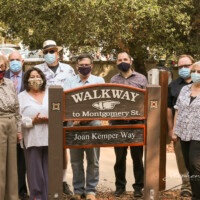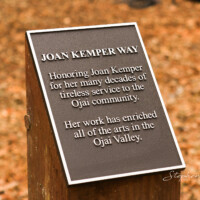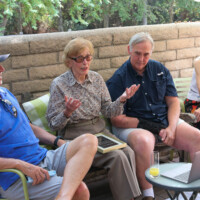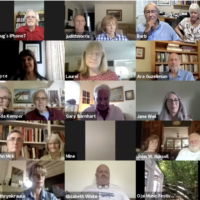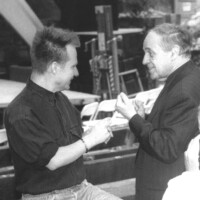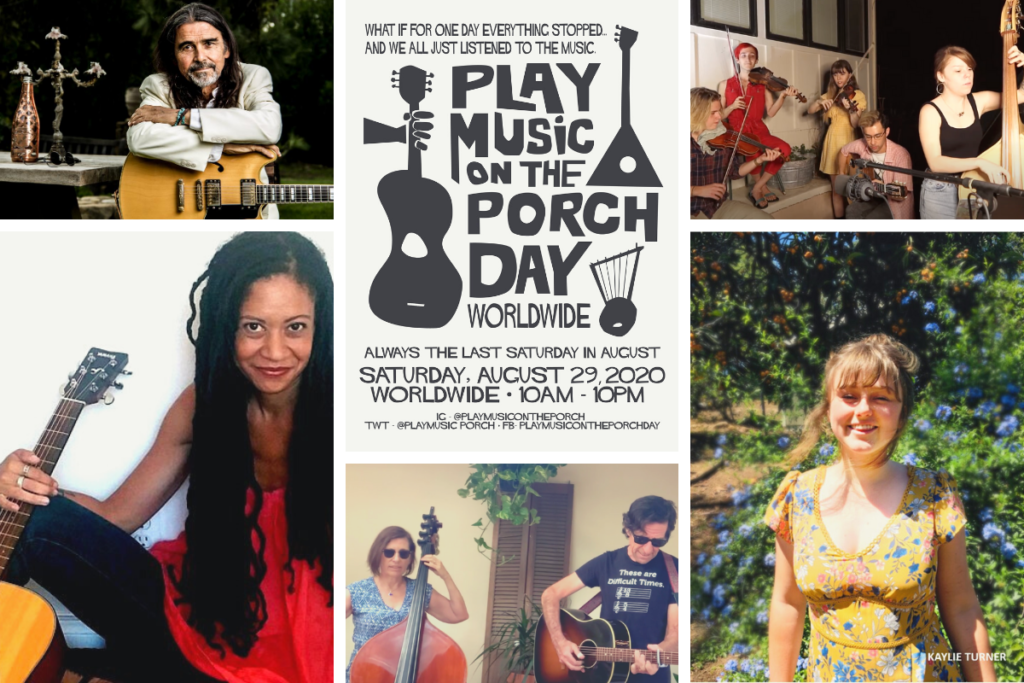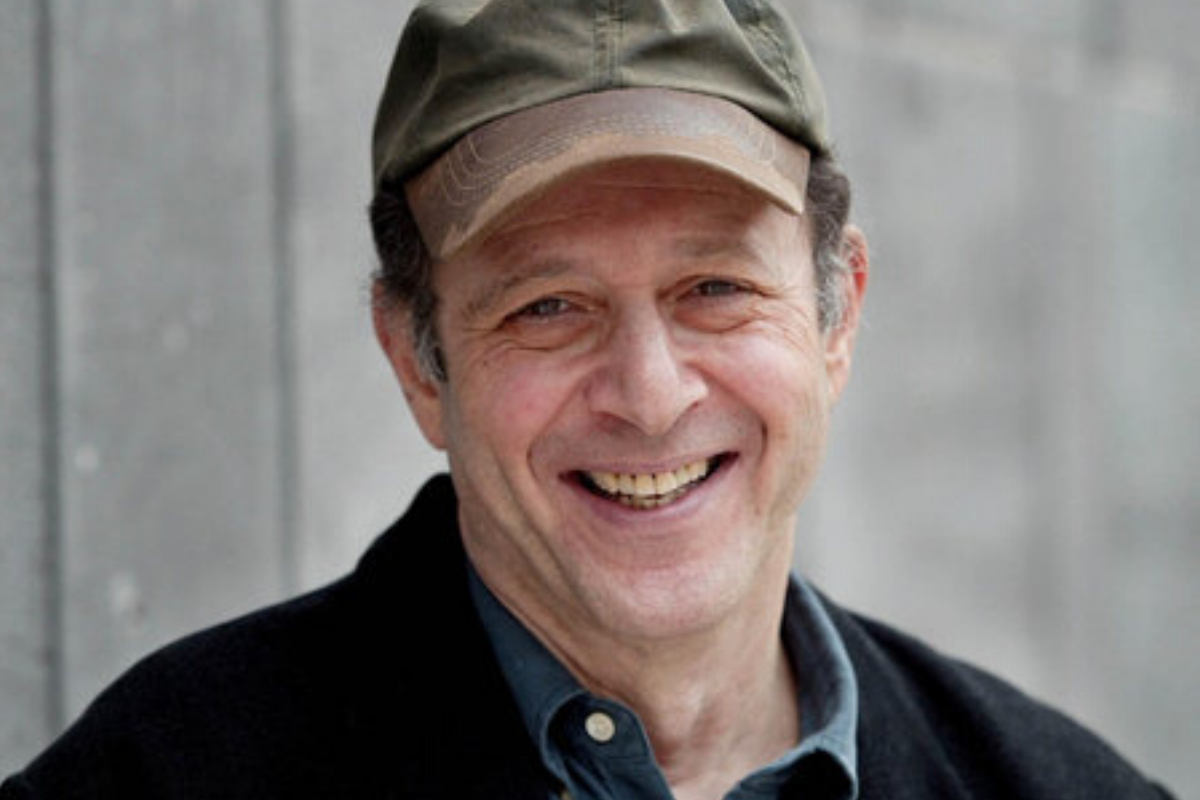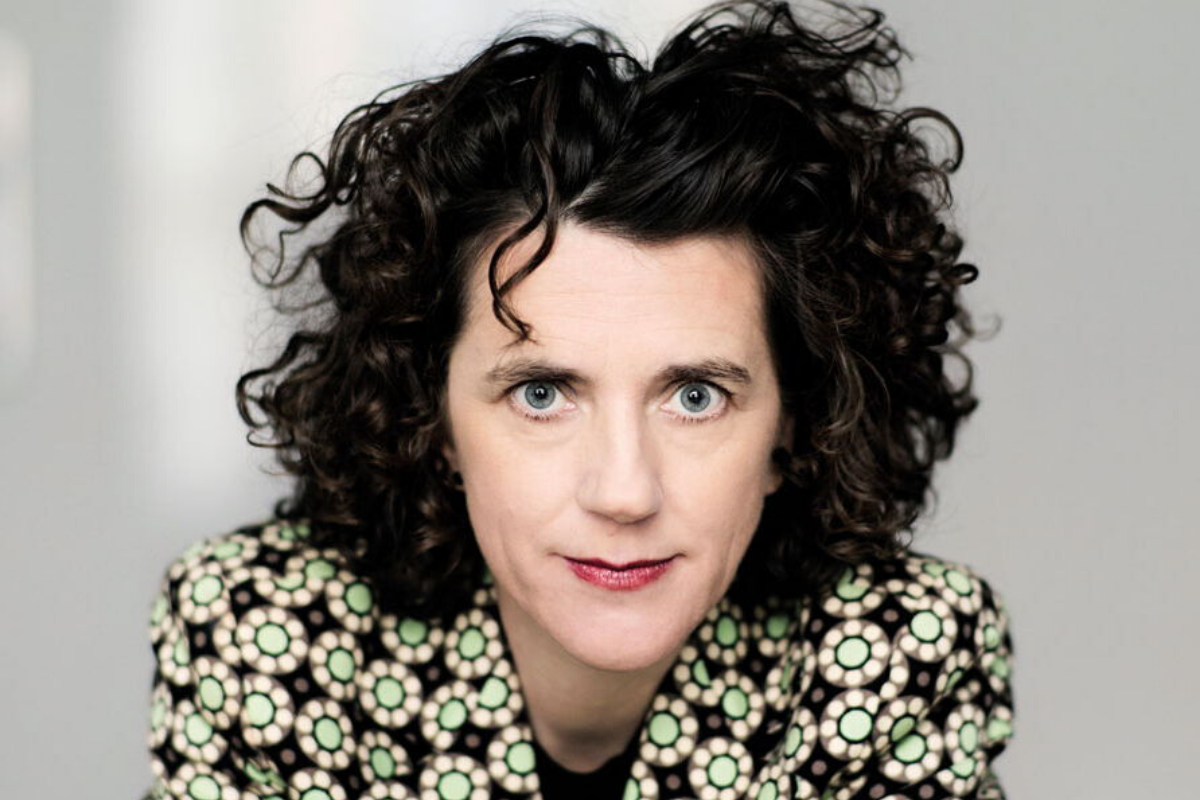Music Van Arrives!
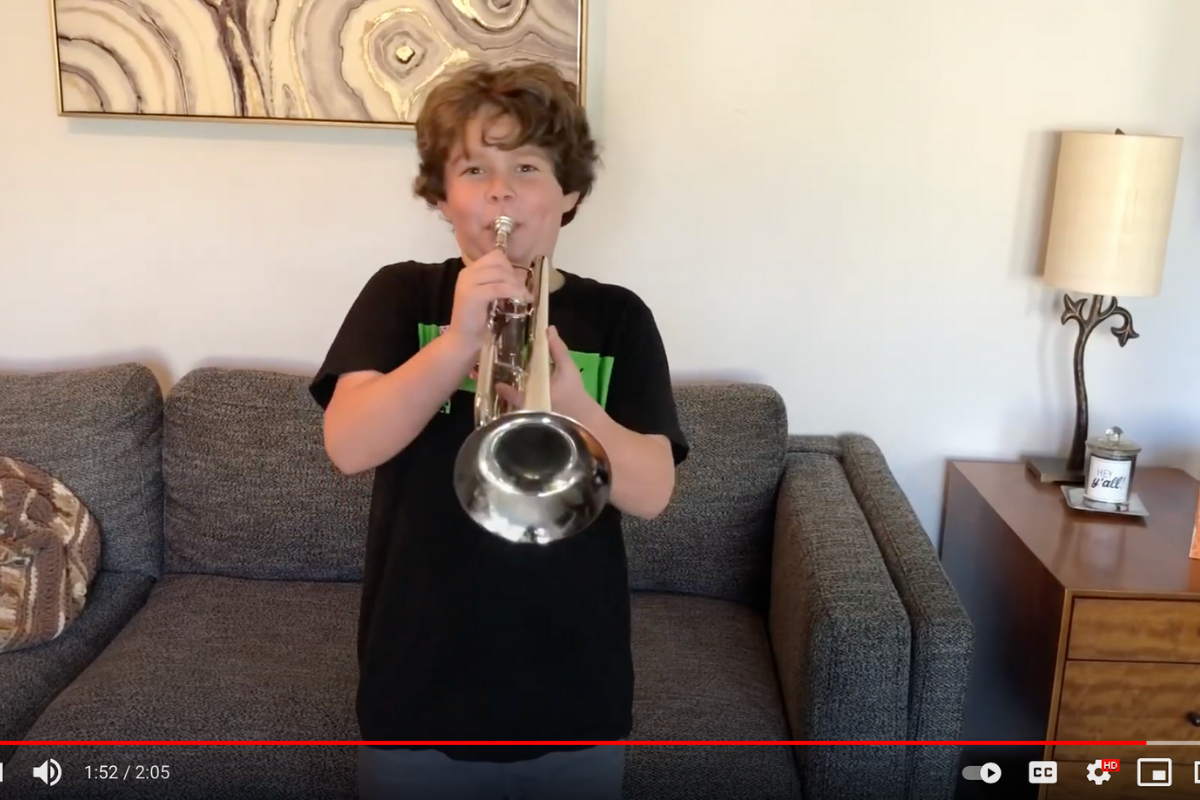
Music Van is one of our most favorite activities that encourages students to try out musical instruments. This year, Music Van will go virtual, thanks to our collaboration with the Santa Barbara Symphony.
Ojai school children will be introduced to the instrument family in a new digital way. To supplement this virtual version, our very own BRAVO Committee has put together short videos to show just how much fun it can be to play an instrument. Special thanks to several local students who helped demonstrate!
Special thanks to our community partners for supporting our BRAVO programs!
Ojai Women’s Fund
Alice C. Tyler Perpetual Trust
John and Beverly Stauffer Foundation
City of Ojai
Montecito Bank and Trust
From Ojai with Love featuring Julie Smith Phillips

A musical gift from the Ojai Music Festival: harpist and 2021 Festival artist Julie Smith Phillips performs a movement from Tree Suite for solo harp by Hannah Lash. Enjoy!
Fall & Spring: Song & Play
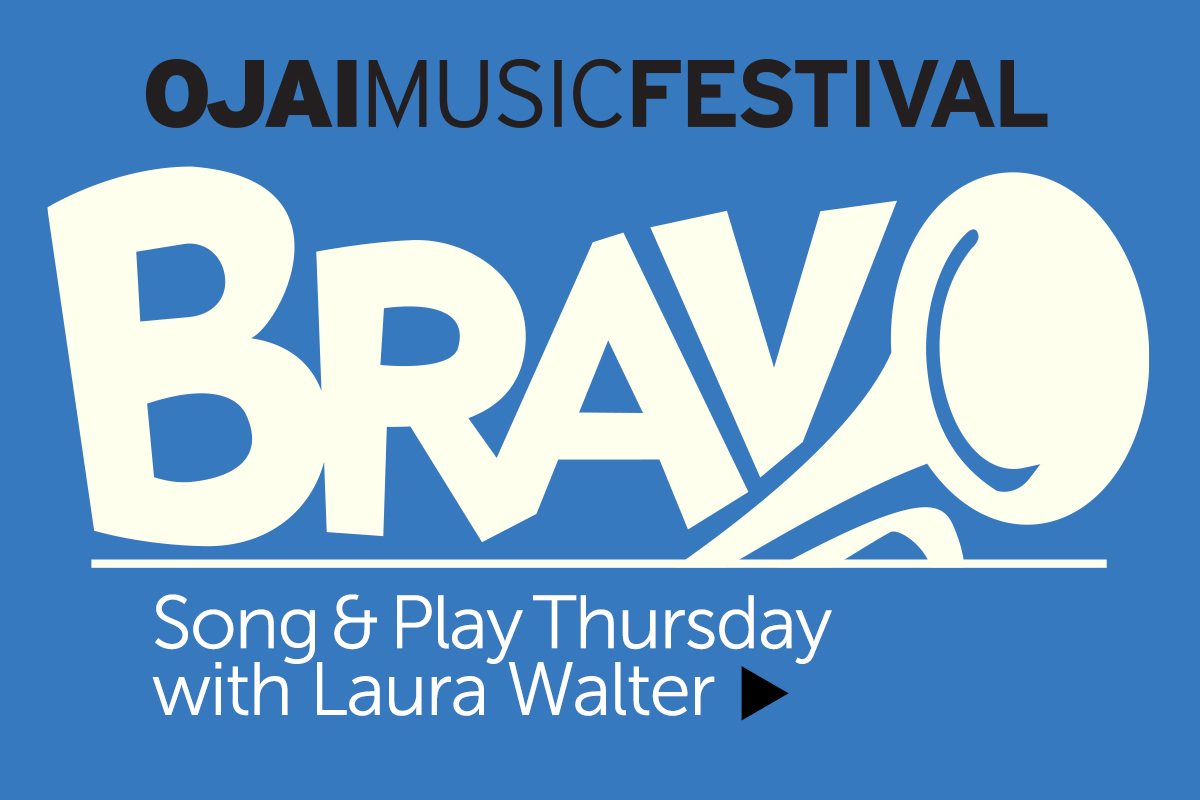
We continue our learning even in the virtual world! Working with the Ojai Unified School District, the Ojai Music Festival’s BRAVO education & community program offers online classes with Ms. Laura.
Special thanks to the Ojai Festival Women’s Committee for their ongoing support for BRAVO, and to the Ojai Women’s Fund for their generous donation during the FY2022-2023 school year!
Click the tabs below to watch our Song & Play lessons.
- LESSON 9 | 08.27.20
- LESSON 10 | 9.3.20
- LESSON 11 | 10.01.20
- LESSON 12 | 11.05.20
- LESSON 13 | 12.03.20
- LESSON 14 | 01.07.21
- LESSON 15 | 02.04.21
- LESSON 16 | 03.04.21
- LESSON 17 | 04.08.21
- LESSON 18 | 05.06.21
- LESSON 19 | 06.03.21
LESSON 9 | 08.27.20
HERE WE ARE TOGETHER
Our first day back, and it’s so glorious to be together, even though it can only be virtually for now! We are going to set ourselves up to be the most successful we can be, through singing and playing, and starting to learn each other’s names. How important is a name? It is how we are known. It is an avenue for attachment. It leads us into community.
HOT CROSS BUNS, THE STORY
This song is often the first experience children have playing on an instrument. We approach this folk song through a story. Why did people not make signs to advertise what they were selling? How did people sweeten their food 1,000 years ago? What was the importance of singing in the streets? We also add the hand signs for the music notes.
CLICKETY CLACK
Movement causes our attention systems to click on. Adding movements helps lower distractibility. When we create a train somewhere and move to it, our brain kicks into participation. Participating physically in a basic way is a direct route to play. When we couple the movements with the words (notice the syllables in the fingers), we move the student into stabilization, and the emergence of intelligence.
LESSON 10 | 9.3.20
This week’s play involves the balance between repetition and variation.
TIDEO
The brain loves repetition. Up to a point. It looks for patterns. Then it delights when there is novelty, something different. Balancing these two helps to stabilize a child’s emotional state. The song stays the same. It is predictable. The fingers popping up are a surprise. Looking for a Hot Cross Buns pattern is always fun!
LESSON 11 | 10.01.20
Taking a look at proprioception, puzzling, and the playfulness of Mozart.
WHEN I WAS ONE
One thing that children need is tons of proprioceptive input. This is how they orient themselves to the world—jumping, skipping, stomping, spinning. They develop their spatial awareness, both of themselves and their environment. This song is a great way to play with rhyming words, and get the body up and moving.
SOMEONE’S WEARING
Here’s a fun way to connect visual art and music. When we are together we sing about someone’s clothing. Sometimes the clue is very hard to spot, but an amazing thing happens; the children become focused on each other in a positive way, hoping they can find who is wearing, for instance—”unicorns”, or “something delicious”. This positive social regard for other is important for gathering in community and building the tools of empathy.
MOZART CUCKOO CANON
Have you ever wondered where Mozart got his sense of playfulness? Here is the first stage of learning his “Cuckoo Canon”. When we sing it in a round, using the hand signs, there is a wonderful symbiosis of challenge, skill and the delight in doing it. And we can hear the cuckoo bird. Genuine play has a characteristic of being autotelic—doing it for its own sake. It is so joyful to feel this!
LESSON 12 | 11.05.20
FARMER IN THE DELL – TRACKS FOR READING
Using a secret song triggers the brain’s memory and recall. The brain looks for an auditory match. It searches previous experiences and pictures it has made, based on our play of this game. We represent the song by acting it out in the classroom. Here is an extension of that—new verses to explore rhyming and phrasing patterns. The prosody of our language is reflected in our songs, and this assists with the development of language and listening skills.
SEE SAW
This folk song has a rich history, being used by lumberjacks who were using a saw together. They would sing the song to keep their sawing movements in sync. It is about an apprenticeship relationship, when there were master electricians and plumbers, etc. that would take on a young person to learn the trade. I think poor Jack liked to goof off, to which we can all relate! True to its nature, this song sung by a room of children and adults cause the group to sync together, matching awareness, skills, and action.
COME GOOD RAIN
We are learning to use the sign language symbols for this song. Children share why the rain is good. Being interested in nature, and the cycles of rain, growth, and plants is good for all of us to remember. Later on in school, this is a beautiful song to sing in canon, and as a partner song that goes with other songs. But first, we explore its meaning.
LESSON 13 | 12.03.20
HOP OLD SQUIRREL
This week we explore the importance of the proprioceptive system, and listening for accents and syllables. The most distinguishing characteristic of a piece of music is its rhythm, so we play with that.
RIG A JIG
This old jig from the British Isles enacts the joy of a chance meeting with a friend. Going for a walk and seeing someone you know can be an experience of amazement for a child. Especially when they see others from school out in the community. This song works to preserve that delight.
OH I KNOW SOMEONE
Learning to hear the accented and unaccented parts of speech and music are key to comprehension. Children love exploring syllables, both in their own names, and those of their friends. Sometimes they love when we make it harder just to see if we can get the flow of the number of syllables, the correct accents, and all at the normal speed of speech. It’s a fun challenge.
NOTE OF THE DAY
We spend most of our time singing songs, acting out the words, and exploring the sounds auditorily. This is referred to as procedural learning. The declarative process of learning note names can be done very quickly and is an addendum to our weekly lessons focused on play.
LESSON 14 | 01.07.21
Exploring sounds and symbols leads to increased literacy. And we have a science experiment with song!
WINDY WEATHER
We are excited about science, and pairing science with music. Sound vibrations are fun to study from a science perspective also. Watching how different leaves blow in the wind is curiously relaxing. It’s fun to make predictions.
LETTER POEMS
Children delight in challenges of object permanence, as well as searching for objects. This satisfies the brain’s natural tendency to look for patterns in nature (is that a saber-tooth tiger hiding in those bushes?). When we play this in class, one person drops the letter behind someone while we sing with our eyes closed. We love watching the face of the person who finds the letter, and gets to chase the other person. So joyful! Poems by Shel Silverstein.
ROW, ROW
Someday soon we will be singing this favorite in a round. At summer camp, we have groups of children acting out their own boats together, and see how they move across the floor. Then we have them come up with their own words to extend the drama. Imagination builds intelligence!
SECRET SONG
Once we have played a song many times, we can start to look at the rhythm. Rather than explaining right off the bat, we explore. How do these symbols function? These lines are just arbitrary signs that have developed into symbols in music for the speed of notes. Interpreting written symbols by having a sound for them is what reading is all about. Since the children know the song, they can search their memories for an auditory match. Doing is stronger than telling. By singing the solfège, we start to understand the relationships between notes.
LESSON 15 | 02.04.21
A symbol is a symbol only if it makes present again that for which it stands. We are playing with sound experiences.
Sally Go Round
When objects can stand for other objects, we are engaging the imagination. Eventually, abstract symbols, such as letters, which make up words, can stand for objects. While playing with these ideas, the children are learning a lot of folk songs that accurately carry the prosody of the English language.
Note of the Day—F
In class the children take turns whispering their guess to me. The room gets very quiet, except that we all start laughing about how quiet we just got!
Roly Poly Tracks
Rhyming helps our auditory system develop, and the auditory system is of primary importance for reading, either music, or language. In this way, studying and singing music helps the brain develop structures for greater academic success.
Penny solfege
Another symbol used in representing sound is solfege. This is the do, re, mi, fa, so, la, and ti of the scale. In our classes, we sing the solfege, explore the difference in sounds, and read the solfege after we have already experienced it. The song and sound need to be represented in our bodies and physically experienced, before seeing the symbols. This leads to a robust learning experience.
LESSON 16 | 03.04.21
Repetition and variation are the two spices of music mastery. We set up an environment where the students ask if we can do it again. This is internal motivation at its finest!
Fly Away
I had some birds outside my window, so I sang for them. The melody of this song goes up, and then it goes down. And our bird follows the melody by going up, and then coming back down to the nest. It’s so important to have a comfortable nest.
Here We Are Together
We not only talk about community; we sing about it. Our actions with our students and families show it. These pro-social skills help to build a safe environment of inclusion and acceptance. Our hands are singing the “do” and “so” of the song, too!
Clickety Clack
Children love the predictability of making different movements that correspond to distinct sounds. This helps us practice, by repeating the experience to achieve mastery. Changing the motions provides the variation that the brain needs to stay engaged. The brain is always looking for patterns, and novelty.
LESSON 17 | 04.08.21
Play is one the greatest equalizers we have in society. When we play together, we are equal participants; no child or adult has any advantage over any other. People who have play experiences together are much less likely to lash out at their peer, but rather work to come to a resolution. Our games feature many opportunities for partnership and collaboration, as we get to practice listening to all ideas and negotiating solutions.
Bombalalom
This song comes from the deep south of Brazil and means “our place of peace”. Sharing our peaceful place builds attachment to our community, because it is something very personal about us, and we want to be known. The beauty of this song when sung in a round, or with other partner songs, or with its descant, helps us to appreciate each other.
Ginger Snap
Eventually, we have a room full of people with wings extended, trying to fly around the room. We bow to our partner, modeling respect. When we “take them by the shoulders”, all the children quickly organize themselves into a line (all by themselves!) to fly together. We have our own flock then!
Sally Go Round, rhythm, solfa
When puzzling over a secret song, the brain is looking through its memory banks for an auditory match. Sometimes a part of the rhythmic sound sparks a word, or a movement that we have previously done. The cross lateral indexing of the modalities of learning is one thing that gets dendrites branching. Building the experience to singing only one of solfa syllables out loud engages the skill of picking out the figure from the auditory ground, a skill so necessary in reading and paying attention.
LESSON 18 | 05.06.21
Today we have some experiences of kindness, acceptance, and integrity through music.
Note of the Day—A
Music is such an abstract language, but isn’t all written language? Once we make sense of it, we are all set. Once we sing it, it becomes concrete. Children love to explore the relationships between notes: in how they sound, in what they look like, and with the hand signs. That is why we sing a lot before we read music, just as we speak before we read. Emerging intelligence needs to hear it first, then see it.
Mulberry Bush
The integration of learning modalities happens when our actions line up with our words. Here I suggest actions that the children will know about, but maybe haven’t had direct experience of, such as throwing a snowball (coastal California!), or petting an iguana. Setting down this template in the brain, of matching language with movement, lays the foundation for integrity. We are doing what we say.
Love Canon, 4 parts
One of the great joys of singing together is singing in canon. Once the children know the song automatically, without needing to use up a lot of attention and focus to enjoy it, they are ready for singing in a canon. The harmonies in this song are wonderfully pleasing. The children are so happy to create such a thing of beauty. Harmony is naturally produced through the melody. They can own it, because they produced it themselves.
Make New Friends in Different Languages
Singing together helps us understand who and what we are. We are in a season of hope (at least, we hope we are!), embracing our common humanity. People from around the world are looking forward to coming together to greet old friends and to meet new friends. We embrace people and extend the hand of welcome. We can’t wait to get to know you better.
LESSON 19 | 06.03.21
Play is to intelligence as breath is to life. If we make our interactions with children joyful and filled with beauty, they will want to come back and do it again.
Row Row
Penny Song
Windy Weather Rhythm
Tallis Canon
What’s on your Bookshelf Recommendations
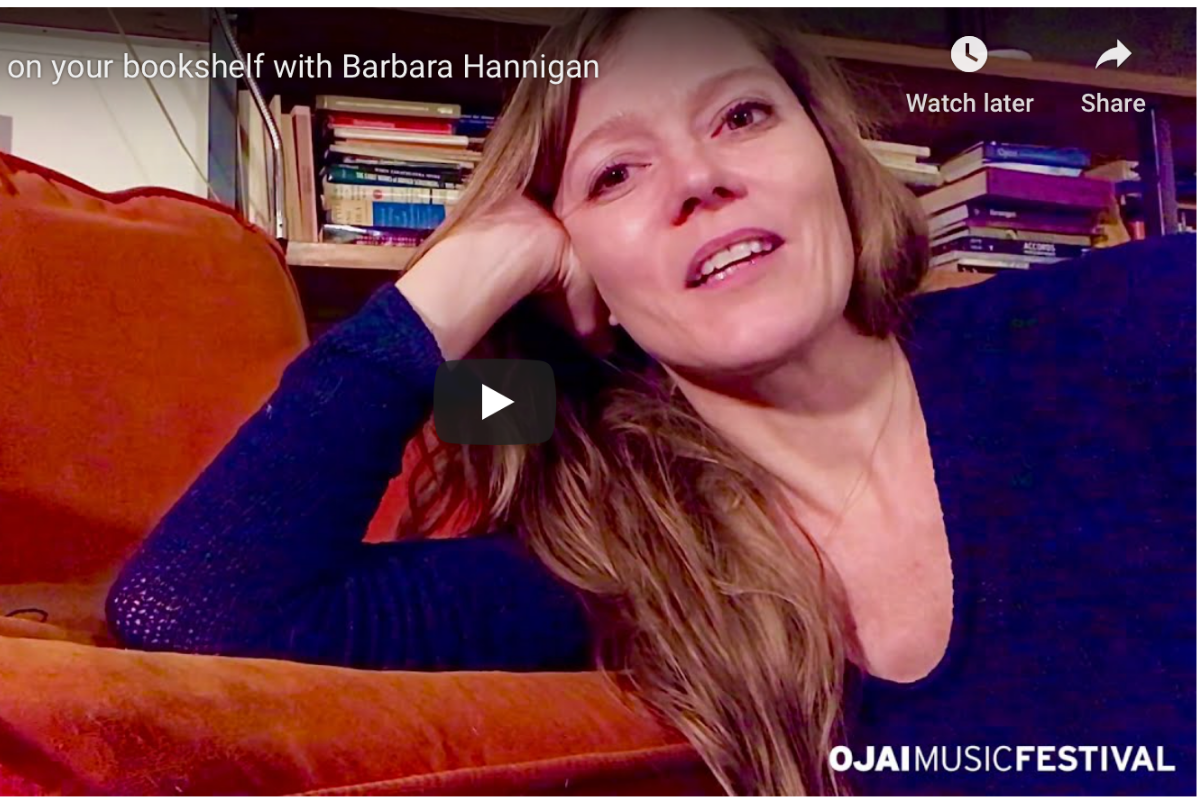
In our current time of endless Zoom meetings or even when watching the news, we have taken notice and peeked curiously at other people’s backdrops. Inevitably, a bookshelf seems to be a frequent ‘prop’ — always lined with what looks like interesting books…and so we all wonder, what’s on their bookshelf? What is there that might interest me, inspire or entertain me during these times? What might I learn about the person on screen that I didn’t know? For this, we turned to our Festival family – Barbara Hannigan, George Lewis, Thomas W. Morris, and Miranda Cuckson – to share with us their own inspirations. What we come out with to share with you is a multitude of fascinating reading and music resources. Enjoy!
BARBARA HANNIGAN
Books:
Nuria Schoenberg-Nono – Arnold Schoenberg: Playing Cards
Arnold Schoenberg – Theory of Harmony
Carl Schorske – Fin-de-Siecle Vienna: Politics and Culture
Music:
Alban Berg – Lulu
George Gershwin – Girl Crazy Suite
GEORGE LEWIS
Books:
Naomi André – Black Opera: History, Power, Engagement
W.E.B. Du Bois – The Comet
Luc Boltanski & Eve Chiapello – The New Spirit of Capitalism
Uwe Johnson – Anniversaries: From a Year in the Life of Gesine Cresspahl
Kim Stanley Robinson – The Ministry for the Future
Music:
Wagner – Lohengrin
Wagner – Parsifal
Composers he is following: Andile Khumalo, Hannah Kendall, Courtney Bryan, Leila Adu-Gilmore, Jessie Cox, Jason Yarde, Daniel Kidane, Tania León, Alvin Singleton
Thomas W. MORRIS
Books, etc:
Joshua Wolf Shenk – Powers of Two: How Relationships Drive Creativity
Heidi Waleson – Mad Scenes and Exit Arias: The Death of the New York City Opera and the Future of Opera in America
Stave Jigsaw Puzzles, Vermont
Music:
J.S. Bach – Cantatas
Fritz Reiner – Chicago Symphony Play Works by Ravel and Debussy. RCA Red Seal, 1986, CD
Fritz Reiner & Chicago Symphony Orchestra – The Complete RCA Album Collection, CD
MIRANDA CUCKSON
Books:
Dominique Fourcade – Henri Matisse Ecrits et propos sur l’art
Charles Mackay – Extraordinary Popular Delusions and the Madness of Crowds
Joseph Szigeti – Szigeti on the Violin
Tobias Wolff – This Boys Life: A Memoir
Music:
Alban Berg – Lulu
Blue Heron (Renaissance Choir)
Christelle Bofale (Singer/songwriter)
Jon Hassell (Experimental trumpeter/composer)
Paco de Lucia (Flamenco guitarist)
Johannes Ockeghem (Renaissance composer)
ARA GUZELIMIAN
Books:
André Aciman – Out of Egypt: A Memoir
Eric Ambler – A Coffin for Dimitrios
Ishmael Beah – Radiance of Tomorrow
Tove Jansson – Travelling Light
Penelope Lively – Moon Tiger
Tayeb Salih – Season of Migration to the North
Zadie Smith – Swing Time
Lizabeth Strout – My Name is Lucy Barton
Miral Tahawi – Brooklyn Heights: An Egyptian Novel
Music
John Adams – The Wound Dresser
Smithsonian Anthology of Blues
Blind Willie Johnson – Dark Was the Night, Cold Was the Ground
Vikingur Ólafsson playing Bach – Concerto in D minor, BWV 974 – 2. Adagio
Read Ara’s “Music for our Time” blog
Ojai Music Festival Photo Gallery
[ngg src=”galleries” ids=”124″ display=”basic_imagebrowser”]Entering in its 75th anniversary season, the Ojai Music Festival connects world-renowned artists and audiences in performances and conversations that push limits, risk failures, and spark surprise. The Festival nurtures musicians, composers, and artists who shape the music of our time. Ojai’s spirit of innovation and informality draws audiences who are specifically eager for experiences beyond the norm of standard classical musical performances.Photo 1: John Luther Adams’ Strange and Sacred Noise, Besant Hill School
Photo 2: John Luther Adams’ Songbirdsongs, Meditation Mount
Photo 3: John Luther Adams’ Inuksuit, Libbey Park
Photo 4: John Luther Adams’ Sila, Libbey Park
Photo 5: Music of Lou Harrison, Libbey Park
Photo 6: Mahler Chamber Orchestra members performing a wide-range of music, Libbey Park
Photo 8: Children’s concert with Patricia Kopatchinskaja
Photo 9 and 10: Luigi Nono’s La lontananza nostalgica utopica futura, Libbey Park
Photo 11: Caroline Shaw’s Will there be any stars in my crown, Zalk Theatre
Photo 12: Kaija Saariaho’s La Passion de Simone
Photo 13: Josephine Baker: A Portrait (World Premiere)
Photo 14: Stravinsky’s The Rake’s Progress
Photo 15: Ojai Talks with members of LUDWIG
Photo 16: Libbey Bowl audience
Music For Our Time
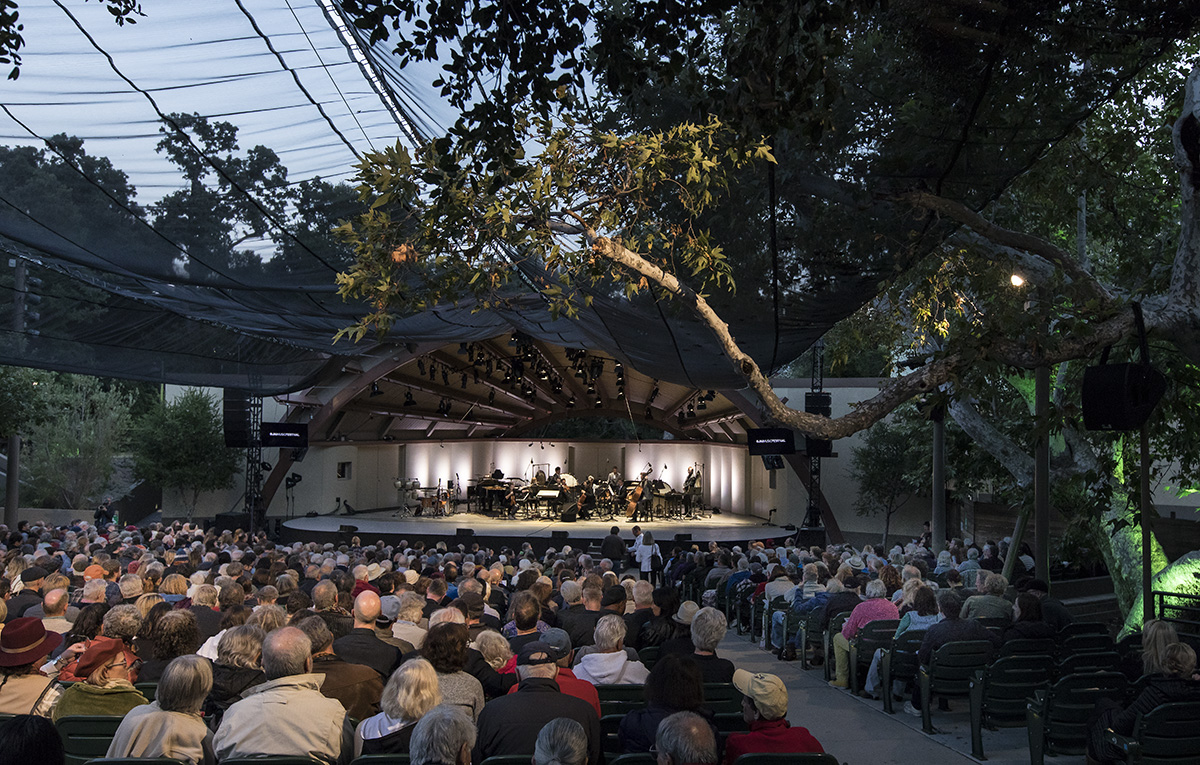
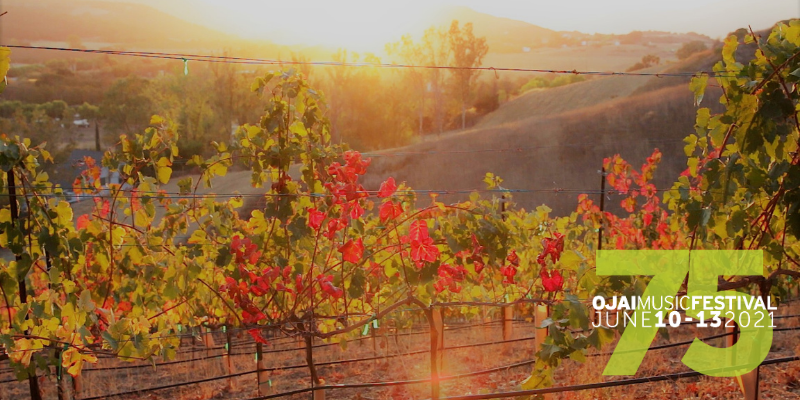
A Message from Ara Guzelimian, Artistic & Executive Director
I write this on a bright November day, the air fresh with the crispness of the season. It has been a time of extraordinary events, marked a few days ago by an election of extreme division. We continue to be in the midst of an unprecedented pandemic, which has brought much loss, separation, and isolation. All of that is compounded by the racial and economic fissures made apparent by events of the past year.
How do we measure this time in our innermost thoughts? Many years ago, I first met Peter Sellars at a conference in San Diego where he was giving a talk. His remarks have stuck with me, growing in importance with the passage of time. Peter said that our response to the arts is one of the few truly private experiences we have at a time of very little privacy. We encounter a book, a play, a piece of music, a work of art, a dance; we may express a public opinion and may even try to second-guess what a “correct” and “sophisticated” opinion might be. But when all is said and done, when the lights are out and our head hits the pillow, we are left alone with our experience of the art. We love it or we don’t, it speaks to us or it doesn’t, we understand it or we are left confused. But, in the end, we feel what we feel and think what we think.
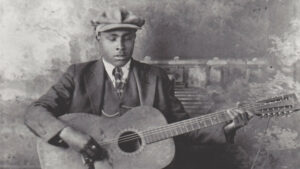 Like so many of us, I have turned to music of every variety imaginable to keep me company in this roller-coaster time. I’ve found myself returning to a Smithsonian anthology of the blues that I’ve had for years but had overlooked more recently. There is such richness in this tradition and, as B.B. King observed, “blues is a tonic for what ails you. I could play the blues and not be blue anymore.” One of the most moving discoveries among these old recordings is this one, sung and played by Blind Willie Johnson (inset photo), that summons up a well of human expression without a single word being uttered. Here is a recording made nearly 100 years ago that reaches out across time and speaks to us with amazing currency. This is the raw power of music in its ability to express deep emotion.
Like so many of us, I have turned to music of every variety imaginable to keep me company in this roller-coaster time. I’ve found myself returning to a Smithsonian anthology of the blues that I’ve had for years but had overlooked more recently. There is such richness in this tradition and, as B.B. King observed, “blues is a tonic for what ails you. I could play the blues and not be blue anymore.” One of the most moving discoveries among these old recordings is this one, sung and played by Blind Willie Johnson (inset photo), that summons up a well of human expression without a single word being uttered. Here is a recording made nearly 100 years ago that reaches out across time and speaks to us with amazing currency. This is the raw power of music in its ability to express deep emotion.
My other constant has been the music of Bach, especially in the hands of great pianists. Bach’s music is informed by his unshakable faith, an abiding humanity, as well as a sense of order and design. In working with John Adams to plan the 2021 Ojai Festival, I have been listening intently to the recent recordings by one of our artists, the Icelandic pianist Víkingur Ólafsson, a pianist as at home in Bach as he is in the music of Philip Glass. His recent Bach recording is one of exceptional beauty, and I have returned to it often to provide a grounding in this disrupted time. As Víkingur wrote, “everything is there in Johann Sebastian’s music: architectural perfection and profound emotion.” Here is the Adagio from Bach’s Concerto in D Minor, BWV 974:
I happily anticipate Víkingur’s participation next year and am so grateful to John Adams for suggesting him as one of the first guest artists to invite. John himself has had an uncanny ability to give voice to American experience throughout his career – he is a musical chronicler of our times. In recent days, I found myself thinking about The Wound Dresser, a 1989 setting of Walt Whitman’s poem of the same name. In it, Whitman documents his experiences tending to the Civil War wounded in makeshift field hospitals.
In listening recently to The Wound Dresser, I have been so struck by the resonances with our own moment in time – the deep divisions in the country on one hand and the boundless generosity of so many health workers and caregivers in this pandemic on the other. Whitman writes “Thus in silence in dreams’ projections, / Returning, resuming, I thread my way through the hospitals, / The hurt and the wounded I pacify with soothing hand.”
John wrote about the work, “It is a statement about human compassion that is acted out on a daily basis, quietly and unobtrusively and unselfishly and unfailingly.” Another [Whitman] poem in the same volume states its theme in other words: ‘Those who love each other shall become invincible . . . ‘”
And so, we are reminded that artists are our truth-tellers and our chroniclers, their work our necessary companions through thick and thin. I am also reminded that we turn to the arts particularly in trying times. As we approach the 75th Festival in June, it is meaningful to recall that the Festival was founded in 1947, when the world was just barely emerging from World War II. The Festival’s very existence comes from an act of hope and optimism at a time of rebuilding in the face of adversity. In that spirit, we hold the promise of the next Ojai Festival as a similar act of faith.
When we gather together to listen to music, we assert our humanity, our belief in the arts, and in community. Thanks to each of you for creating the warm and welcoming spirit of community that defines the Festival. I am so gratified to be working with the musicians who will bring to life the 75th Festival. And I relish the promise of listening to their music in your company.
Musical Segues: Where they are now
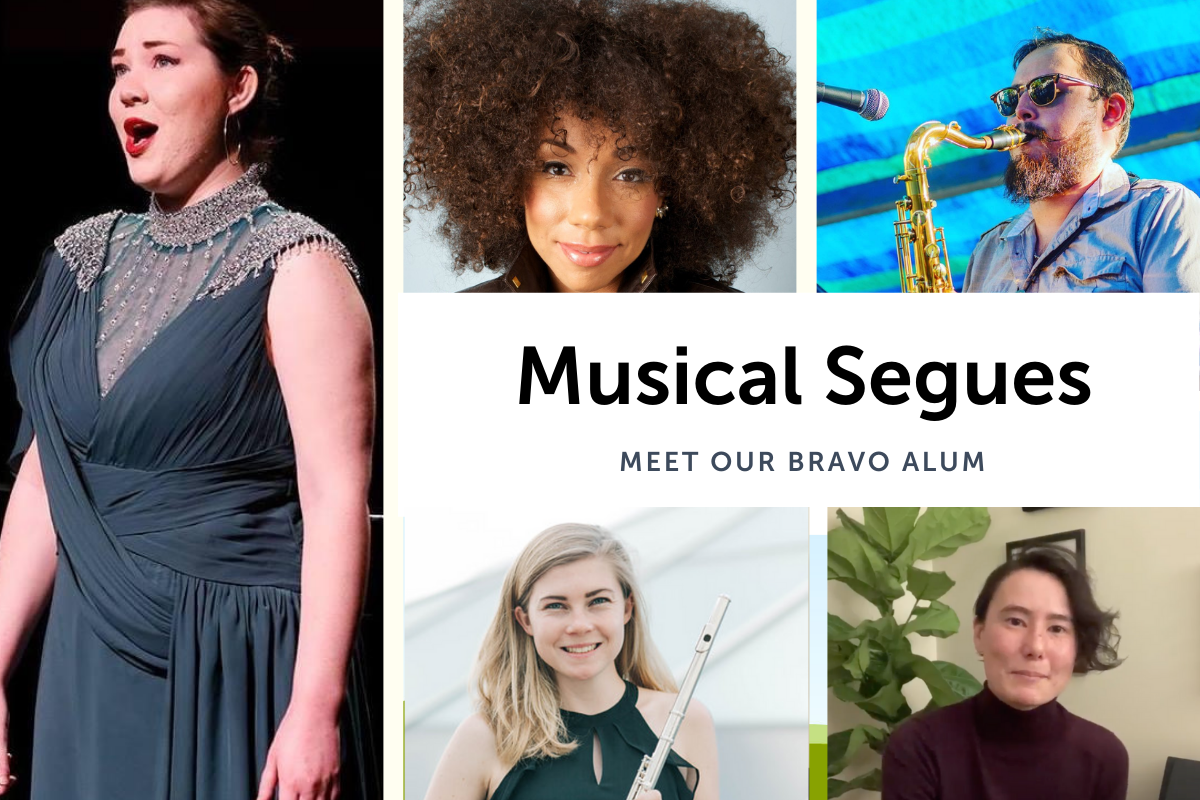

Musical Segues is a recurring segment of the Ojai Music Festival’s BRAVO education & community program that introduces our amazing alumni, who either went through the BRAVO program via the Ojai Valley public schools or participated in our Festival Arts Management Internship program.
Every month we will give glimpses into their world, personal journeys, and how music made an impact on their lives.
- Kari Frances
- Ryan Strand
- Emily Redmond Hall
- Emily Praetorius
- Kathryn Carlson
- Ruben Salinas
- Emily Persinko
- Adryon de León
- Dominique Wright
Kari Frances
 “BRAVO programs have fostered a supportive community of musicians and a culture of concertizing that helped define Ojai’s musical ecosystem, which I definitely benefited from. I can’t stress enough how important it was to see the vocal groups Sovoso at Nordhoff, and the Yale Spizzwinks , and how excited that got me for exploring a cappella in college.”
“BRAVO programs have fostered a supportive community of musicians and a culture of concertizing that helped define Ojai’s musical ecosystem, which I definitely benefited from. I can’t stress enough how important it was to see the vocal groups Sovoso at Nordhoff, and the Yale Spizzwinks , and how excited that got me for exploring a cappella in college.”
What was your experience of music when you were young?
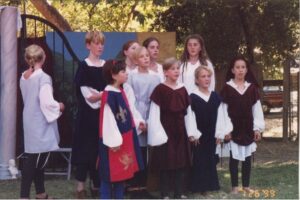 During elementary school, I began singing with Harmonia Mundi, the youth incarnation of Madrigali (a renaissance a cappella group with which my dad, Wayne Francis, sang, which was directed by Jaye Hersh). I think my most direct participation with BRAVO was in high school through the Ojai Youth Symphony and occasional collaborations with Santa Barbara Youth Symphony. I dove into as many music ensembles as I could at Nordhoff High School, primarily under the direction/tutelage of Bill Wagner.
During elementary school, I began singing with Harmonia Mundi, the youth incarnation of Madrigali (a renaissance a cappella group with which my dad, Wayne Francis, sang, which was directed by Jaye Hersh). I think my most direct participation with BRAVO was in high school through the Ojai Youth Symphony and occasional collaborations with Santa Barbara Youth Symphony. I dove into as many music ensembles as I could at Nordhoff High School, primarily under the direction/tutelage of Bill Wagner.
What are your memories of the Ojai Music Festival and Libbey Park?
The Ojai Festival programmed Ligeti’s Poème symphonique at some point; I recall helping manage some of the metronomes for the performance. My parents still have the t-shirt! I also played percussion in Ojai Band, played a little piano at Holy Cross Lutheran Church and in a few of the Holiday Home Look-in fundraisers, and continued to sing with Harmonia Mundi, which collaborated with the Ojai Shakespeare Festival during the summer.
Have you continued to study music?
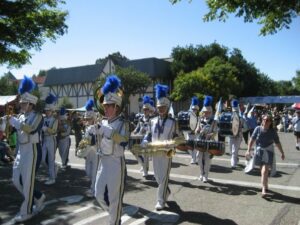 I became deeply involved with collegiate a cappella during college at UC San Diego, joining two student groups as well as an LA-based septet and founding a professional sextet while majoring in music theory (and minoring in Japanese Studies and amassing credits in visual arts classes, both of which remain hobbies). Since then I’ve worked as a freelance vocal/choral arranger, written for or edited books relating to a cappella, caught a fun break and was able to perform an a cappella tune with Imogen Heap when she toured to San Diego in 2010, was on a reality TV show called “The Sing-Off” (Season 3 with the group Kinfolk 9), received master’s degrees in music education from the Eastman School of Music and Teachers College Columbia University, was a conducting fellow with the Young People’s Chorus of New York City, co-directed a treble barbershop chorus, the Sirens of Gotham, to a first-place finish at an international competition, and was a teaching artist and adjunct professor at Hunter College and The New School for a few years before my current position.
I became deeply involved with collegiate a cappella during college at UC San Diego, joining two student groups as well as an LA-based septet and founding a professional sextet while majoring in music theory (and minoring in Japanese Studies and amassing credits in visual arts classes, both of which remain hobbies). Since then I’ve worked as a freelance vocal/choral arranger, written for or edited books relating to a cappella, caught a fun break and was able to perform an a cappella tune with Imogen Heap when she toured to San Diego in 2010, was on a reality TV show called “The Sing-Off” (Season 3 with the group Kinfolk 9), received master’s degrees in music education from the Eastman School of Music and Teachers College Columbia University, was a conducting fellow with the Young People’s Chorus of New York City, co-directed a treble barbershop chorus, the Sirens of Gotham, to a first-place finish at an international competition, and was a teaching artist and adjunct professor at Hunter College and The New School for a few years before my current position.
What are you currently up to?
I am on faculty at the College of Saint Rose, as a choral director and instructor of ear training, music theory, and choral arranging. Most recently, I put together a virtual choir video (which features some Ojai singers!) when the College campus was shut down halfway through the spring semester of 2020, and a project I was involved with was featured in the New York Times (composed by Cory Smythe, who was a regular at the Ojai Music Festival the years they hosted the International Contemporary Ensemble a while ago). My hope is to finish my doctorate at some point in the not-so-distant future, emphasizing musicianship-building and generative/improvisatory practices in choral settings, which is where I hope to continue working. Visit Kari’s website here
Ryan Strand
“If you are looking for an experience the is going to challenge you, Ojai is definitely that experience…there is real family here and so much knowledge and mentoring to be gained.”
This month we highlight Ryan Strand, who was our first Steven Rothenberg Intern Fellow and continued on to become one of our cracker-jack assistant producers. Learn more about Ryan on his website here
Interested in the Festival’s Arts Management Internship program? Click here for details and application >
Emily Redmond Hall
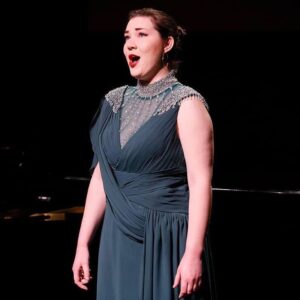
Nordhoff High School Graduate and
University of Redlands Graduate
What BRAVO programs did you participate in during K-6th grade when you attended school in Ojai? What do you most remember?
I went to Summit Elementary, Matilija Middle School and Nordhoff High School. I started singing and playing piano at the age of 6. Going to the BRAVO Imagine concert and performing in High School were enjoyable highlights! I loved the Music Van experience at Ojai Day and chose to play the flute in school. I went on to earn my college degree in classical voice.
How did your early experiences influence your life now? What are you working in?
To have a world-renowned Music Festival in our own tiny little town is so cool and so rewarding. Being able to volunteer there as a teenager was so important to me because it opened my eyes to what classical music could be—it wasn’t just Bach and Beethoven, it could be all these weird, contemporary works that I just loved and they were so inventive. It’s not usual for a someone to be exposed to this music, much less a teenager in a tiny little town.
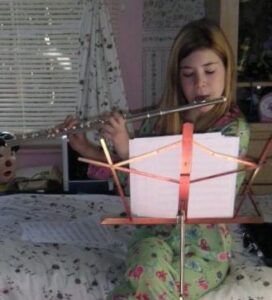 How has music impacted your life? What is your involvement with music now? Do you see yourself being involved in music in your future? What are your hopes around that?
How has music impacted your life? What is your involvement with music now? Do you see yourself being involved in music in your future? What are your hopes around that?
Performing gives me great pride and peace at the same time. Now I teach children age 3-10 at the Ventura Music Academy. I am one of the vocal directors at Ojai Youth Entertainer Studio. Being able to help young singers find their voice is an awesome thing that I get to do. Working with kids is particularly rewarding and just nourishing for the soul. It really is like passing the baton to them. Contributing to their musical education, when I had so many contribute to mine, is so cool. And I get to pass that on and watch as they grow and their skills and talents just flourish and know that I had a part in that and that they will always remember their formative musical experiences growing up. I’m always so grateful for the opportunities that I get to work with youth.
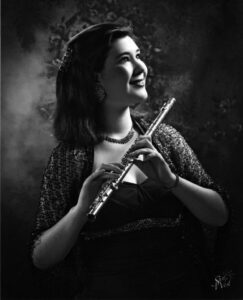 I am also involved with Ojai’s theater community, having done several shows at the Ojai Art Center. I sing and get to help to direct Madrigali, Ojai’s local renaissance acapella vocal group.
I am also involved with Ojai’s theater community, having done several shows at the Ojai Art Center. I sing and get to help to direct Madrigali, Ojai’s local renaissance acapella vocal group.
Emily Praetorius
“It’s quite unmatched in terms of the camaraderie, the friendship and bonding that happens….You really feel like you are part of this family.”
Growing up in Ojai, Emily recalls receiving free tickets to attend a Festival concert through BRAVO and got her first musical glimpse into the world of Percy Grainger. She went off to college at University of Redlands then applied to the Festival’s Arts Management Internship program where she learned everything from working retail (fond memories of our Penguin Book Booth) to eventually becoming the esteemed Rothenberg Intern Fellow. Now finishing her doctorate in composition at Columbia University under the tutelage of 2017 resident composer George Lewis, Emily continues her love of music and applying what she learned at the Festival in her current path.
Kathryn Carlson
Arts Management Intern (2017-2019)
Cal State Long Beach graduate
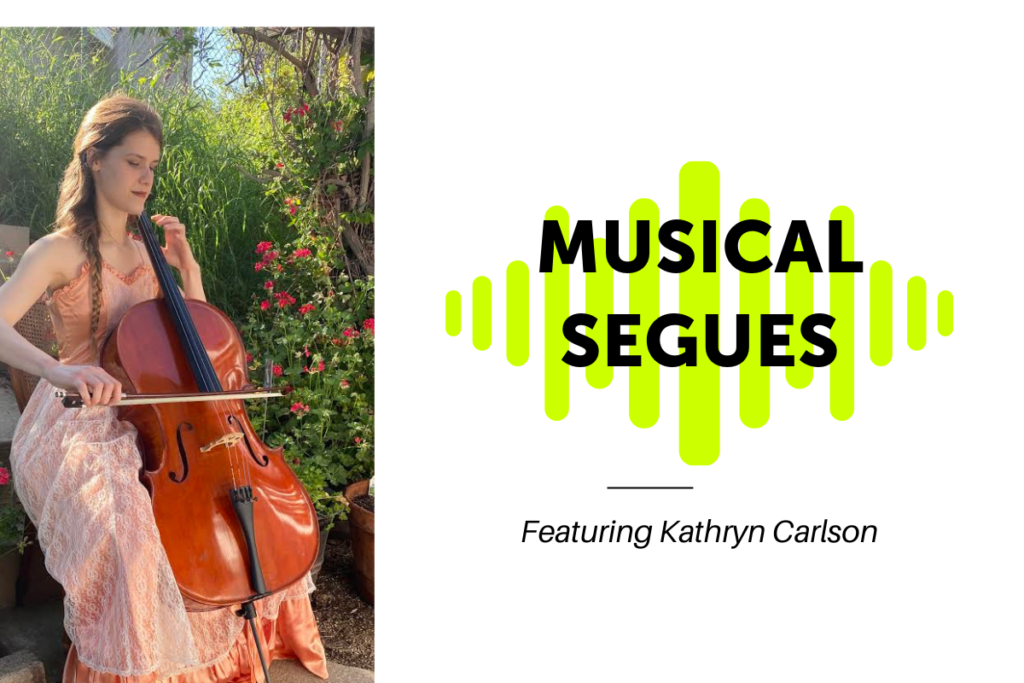
What interested you in applying to the Festival?
My first experience with the Ojai Music Festival was as a guest. I was visiting my boyfriend in his hometown of Ojai in the summer of 2016 when he told me that a music festival was going to be happening downtown. I looked into it expecting to find a folk or pop music festival and was surprised to find that it was centered on contemporary classical music. As a trained contemporary classical cellist myself, I knew I had to attend! Peter Sellars was the Music Director in 2016, and that year I was impressed to see that there was a focus on music written by women. To this day one of my favorite memories is laying on the festival lawn absorbing the sounds of Roomful of Teeth singing Caroline Shaw’s Partita for 8 Voices.
A year later while I was studying at UCSB, our department put out a notice that the Ojai Festival was looking for interns. After what I’d experienced the year before, I had to be involved, and that’s how I ended up applying for the first time in 2017.
What was my favorite Ojai experience?
This may sound odd but one of my favorite experiences was when a guest came up to the box office outraged by the music he had heard and demanded his money back because it “wasn’t music” in his opinion. I watched the Box Office Manager at that time calmly have a long, in-depth conversation with the customer about the nature of the piece, and I’ll never forget how such a meaningful conversation had been inspired by an initially negative reaction. The customer walked away with a different mindset, and even though he may not have personally enjoyed that particular performance, many other audience members after the concert came out saying how much they loved what they had just heard. I love that Ojai produces challenging experiences that we can talk about and use to learn about each other.
What was an a-ha moment working in any of the Festival departments?
Honestly, an a-ha moment during my first year as an intern was realizing that the core team of the Ojai Music Festival is small. It’s extremely impressive that this small group of people completely transforms a local park into a world-class festival venue in the span of just a week. It’s inspiring that so much can happen with a small, dedicated group of people.
What are you up to now?
I graduated just this spring from California State Long Beach with my Masters in Instrumental Performance. I currently have a small studio of cello students and also work part time on the side. I’ve been participating in a virtual ensemble that my housemate started at the beginning of the quarantine called the Philanthropic Philharmonic (@philanthropicphilharmonic) which puts together recordings of musicians from all over in order to raise money for charity. I’ve also been working on making arrangements for one to four cellos that I record myself and edit together. I’m hoping to release some soon once I have them all polished. Follow me @kathrynmakesmusic on Instagram if you’re interested in following my progress!
Ruben Salinas
“I find that music is an emotional outlet for me. It’s the thing that gives me the greatest passion.”
This month features Ruben Salinas who went through various music programs in the Ojai Valley including our BRAVO in the schools. Raised in Ojai and a graduate from CalState University Northridge’s music program, Ruben has been an active musician playing saxophone in recording studios and concerts for such artists as Eric Burdon, Noble Creatures, Kenny Loggins, and Jewel. In years past before the pandemic, you could also find him sharing his music at Ojai stomping grounds like the Vine.
Emily Persinko
Meet Emily Persinko, who interned with the Ojai Music Festival from 2016 to 2018. After graduating from San Diego State University, Emily has been working in various arts administrator roles for performing arts organizations, which have included the San Diego Symphony, Art of Elan, La Jolla Music Society, San Diego Youth Symphony, and San Diego State University School of Music and Dance. Emily currently leads the operation of the San Diego Symphony’s learning and community engagement programs and serves as a director on the board for the San Diego Flute Guild.
Adryon de León
Nordhoff High School Graduate
Adryonmusic.com
 Adryon de León was born and raised in Ojai, CA. Over formative years, musical theater infused her life. She has performed background vocals for Macy Gray, Patti Austin, The Growlers, and George Clinton. In 2013, she joined the acclaimed Los Angeles-based soul & funk group Orgone. Orgone’s most recent release, Reasons, features tracks spotlighting de León in a main writing and collaborative role. She also lends her voice to commercial studio sessions worldwide, demoing tracks for production companies. In Spring 2019, Adryon appeared as “Alana” in a production of The Little Mermaid: Live-to-Film at the Hollywood Bowl, featuring Lea Michele, Harvey Fierstein , Peter Gallagher, Cheech Marin, and Leo Gallo.
Adryon de León was born and raised in Ojai, CA. Over formative years, musical theater infused her life. She has performed background vocals for Macy Gray, Patti Austin, The Growlers, and George Clinton. In 2013, she joined the acclaimed Los Angeles-based soul & funk group Orgone. Orgone’s most recent release, Reasons, features tracks spotlighting de León in a main writing and collaborative role. She also lends her voice to commercial studio sessions worldwide, demoing tracks for production companies. In Spring 2019, Adryon appeared as “Alana” in a production of The Little Mermaid: Live-to-Film at the Hollywood Bowl, featuring Lea Michele, Harvey Fierstein , Peter Gallagher, Cheech Marin, and Leo Gallo.
What BRAVO programs did you participate in during K-6th grade when you attended school in Ojai? What do you most remember?
I went on an Ojai Music Festival-sponsored field trip to the Imagine Concert at the Libbey Bowl to see LA Philharmonic perform “Peter & the Wolf” for the students! The exposure to this performance captured the attention of every single child in the audience, for the entire sitting. Sonically, the feeling of the orchestra for the first time was overwhelming. It made me want to pick up my instrument and make some noise. I played flute in concert band, grades 4-6!
How has music impacted your life? What is your involvement with music now? Do you see yourself being involved in music in your future? What are your hopes around that?
Music is now my entire life. I transitioned to full time professional vocalist in 2011, touring worldwide with my band Orgone, working in Los Angeles providing vocals for film, television, demos, background vocals, and live performances. Eight years ago was cast at the Disneyland resort as a featured principal performer.
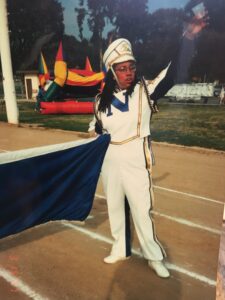 I can’t imagine myself not fully immersed in a music career in the future, whether it be as an instructor, mentor, or performer. My hope is to foster a comprehensive music career while I am able and to leave a positive legacy.
I can’t imagine myself not fully immersed in a music career in the future, whether it be as an instructor, mentor, or performer. My hope is to foster a comprehensive music career while I am able and to leave a positive legacy.
How did your early experiences influence your life now? What are you working in?
Music infiltrated every aspect of my life as a child. My mom is musical, my siblings are involved in various projects, and Ojai fostered a beautiful community of artistic kids just like me. I’m currently majoring in Business Administration and working as many studio projects from home as I can. I’m also working on my solo record and collaborating with other artists.
Dominique Wright
Arts Management Intern
Occidental College, Class of 2020
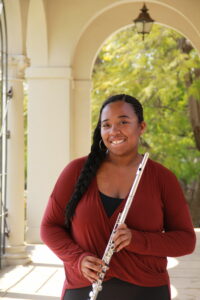 What interested you in applying to the Festival?
What interested you in applying to the Festival?
I applied to the Festival the summer after my freshman year as my Chamber Music coach told me about the program. I had just gotten into social media marketing at my school (Occidental College) and we agreed this would be a great opportunity to improve those skills as well see what happens behind the scenes – there’s A LOT that goes on.
Eventually, I went on to intern at the Festival for three years: 2017, 2018 and 2019. During those formative summers, I was able to work in three different areas: marketing, retail and the box office.
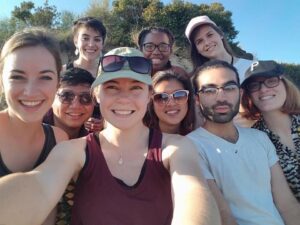
What was your favorite Ojai experience?
I have to say my favorite Ojai experience were outings the interns did together. While we all had busy days, we always had time – at least before the Festival started – for ourselves, and most of the time we would go out for dinner, go to the beach or on a hike. These are your colleagues for the two to three weeks while we are in Ojai, so these outings felt like co-workers hanging out and just recharging for the next day.
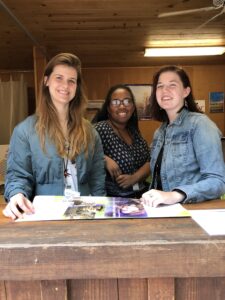
What was an “a-ha” moment working in any of the Festival departments?
Working in the box office, I was able to interact with patrons and the ticketing system which helped me see where our guests were coming from. There were people who would travel hours to come to the Festival. It was an amazing discovery because it showed the impact it had on people and how music brings people together. That’s something I aim to achieve in my career, whatever that may be!
What are you up to now?
This past May, I graduated from Occidental College with a BA in Flute performance and a minor in media studies. Currently I am applying to grad programs for arts administration as well as marketing and looking for jobs to gain more experience, and honestly, keeping myself busy in quarantine. Working in the arts field was never a future I saw for myself until interning at the Festival. I’m aware that my future jobs may not be the same as a festival environment, but this internship was what I always looked forward to throughout the school year; knowing that at the end, I get to go back and be with my Ojai family.
In fact, I’m not the only one who has these career goals, some intern alumni have already started making their mark in the arts workplace, some of which you’ll be hearing from very soon. I look forward to sharing their stories these next several months!
Joan Kemper Way
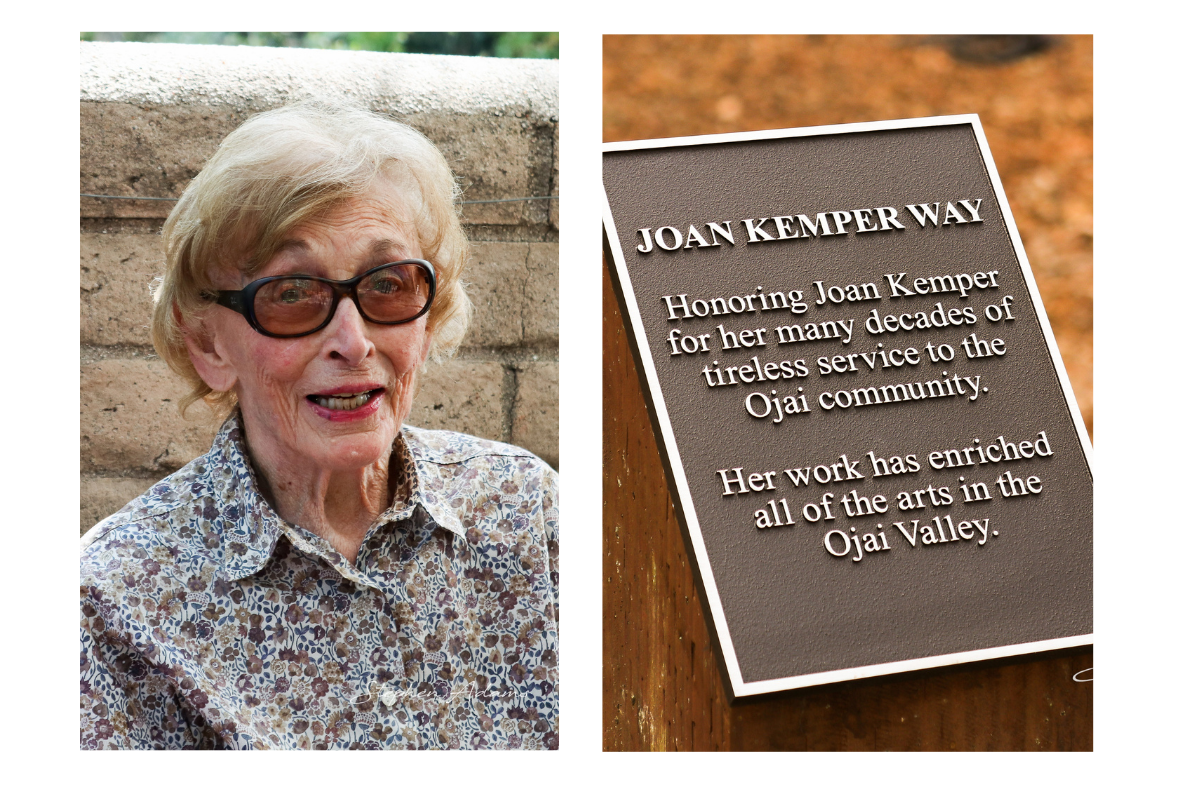
On a characteristically hot and sunny Ojai September day, a small group of people gathered in Libbey Park to honor Joan Kemper, a true community hero. The path connecting the Ojai Art Center with Libbey Park was officially renamed Joan Kemper Way, honoring a woman who has been central to so many community organizations and so many worthy endeavors throughout Ojai. She is one of those treasures who makes the quality of life better not only for those around her but also for so many people she may never meet.
Joan was a relatively recent arrival to Ojai when she stepped in to serve as Executive Director of the Ojai Festival in the early 1990s. I had the huge pleasure of working with her for several years and marveled at her boundless gifts for making things happen. She is one of those remarkable people who has never met a problem she couldn’t solve. The Festival was floundering without leadership at the time she took it over – there was no task to large or small for Joan, who is one of the most persuasive and creative problem solvers I’ve ever met.
In one of my fondest memories, Peter Sellars was directing a fresh re-thinking of Stravinsky’s Histoire du Soldat with Music Director Pierre Boulez conducting in 1992. Peter wanted to capture Stravinsky’s original intent of a certain street-theater atmosphere, updated to the present time. And so he wanted to have a full-size pickup truck on stage at Libbey Bowl to capture that spirit. How to find a loaner pickup truck and get it up on stage? Leave it to Joan to draw upon friends across the community to help with getting the truck, creating a series of safe ramps, and getting it up on stage.
Good things happened whenever Joan is around, particularly throughout the Ojai community. She has a way of rallying people to a common cause, with music and theater being especially close to her heart. She gets you to pitch in and then she makes the whole thing such great fun that you end up thanking her. These days, Joan may slyly say, “you know, I’m basically a hundred years old” – it’s only a slight exaggeration – but her wonderful indefatigable spirit seems to me as lively and inspiring as it was on the day I met her.
I am grateful, like so many others, to travel on Joan Kemper Way! Long may you brighten our lives, Joan.
- Ara Guzelimian, Artistic & Executive Director
Ojai photos by Stephen Adams, Peter Sellers and Pierre Boulez by Betty Freeman
Play Music on the Porch – A Virtual Global Effort
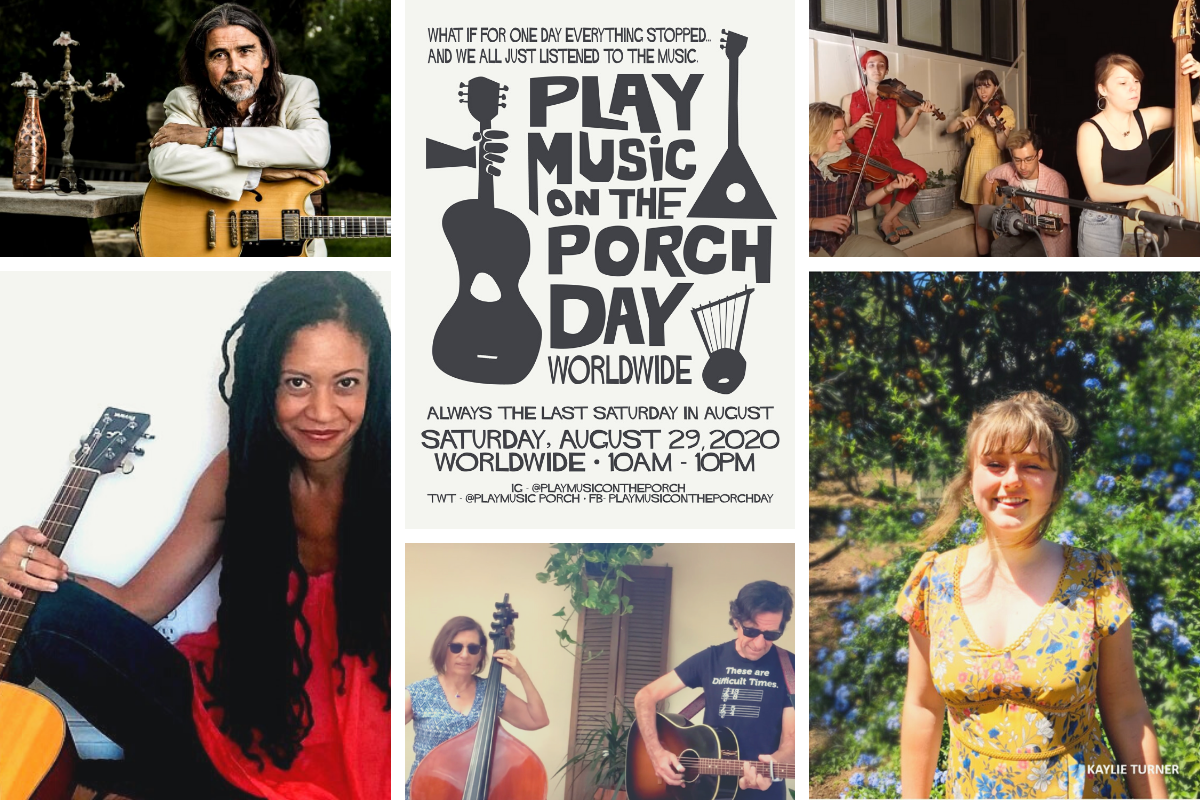
Now more than ever, creative expression is important to join together even in the virtual world!
The Ojai Festival’s BRAVO education & community program is delighted to partner with Porch Gallery Ojai by organizing performances of Ojai-area musicians and students for #PlayMusicOnThePorchDay on Saturday, August 29, beginning at 10am.
For the fifth time, Porch Gallery Ojai will join in this global effort to continuing the tradition of singing and playing to re-establish music as an inclusive, shared and participatory celebration of life. Set your calendar for August 29 when we will launch music videos, played in porches across the Ojai Valley! Videos can be accessed, here, on our website or on our Facebook page: https://www.facebook.com/ojaifestival/.
“The BRAVO program is pleased to work with the Porch Gallery Ojai in this year’s Music on the Porch project. Local musicians enrich the BRAVO program throughout the year, and we feel deeply grateful for their contributions once again, to help us all connect through music. The arts can help us build bridges of hope,” shared BRAVO coordinator Laura Walter.
What is Play Music On The Porch Day?
In 2013 the founder, Brian Mallman, of Play Music on the Porch Day decided to share the idea – “What if for one day everything stopped…and we all just listened to the music?” – with the world. Since then, thousands of musicians from at least 75 countries and over 1450 cities have participated and this movement continues to grow every day with artists, regardless of their differences, are finding common ground through music. Learn more here >
Ojai’s line-up of wonderful musicians providing music for all to enjoy, and inspire us to revive the tradition of gathering, singing and playing music outside with friends and family virtually and safely social distancing!
Chaparral Swing Band
Celtic Nut (Eilam, Noahm and Edaan Byle)
Licity Collins
Fran Gealer
Coree Kotula
Ruby Skye
Kaylie Turner
Babette & Bob Vasquez
Jess Wayne
Calder Quartet in a “Quarantine Style” Performance
With works by Cage, Stravinsky, Ockeghem interspersed with arrangements by Kurtág, and Beethoven to reflect on the new and old.
Ara Guzelimian
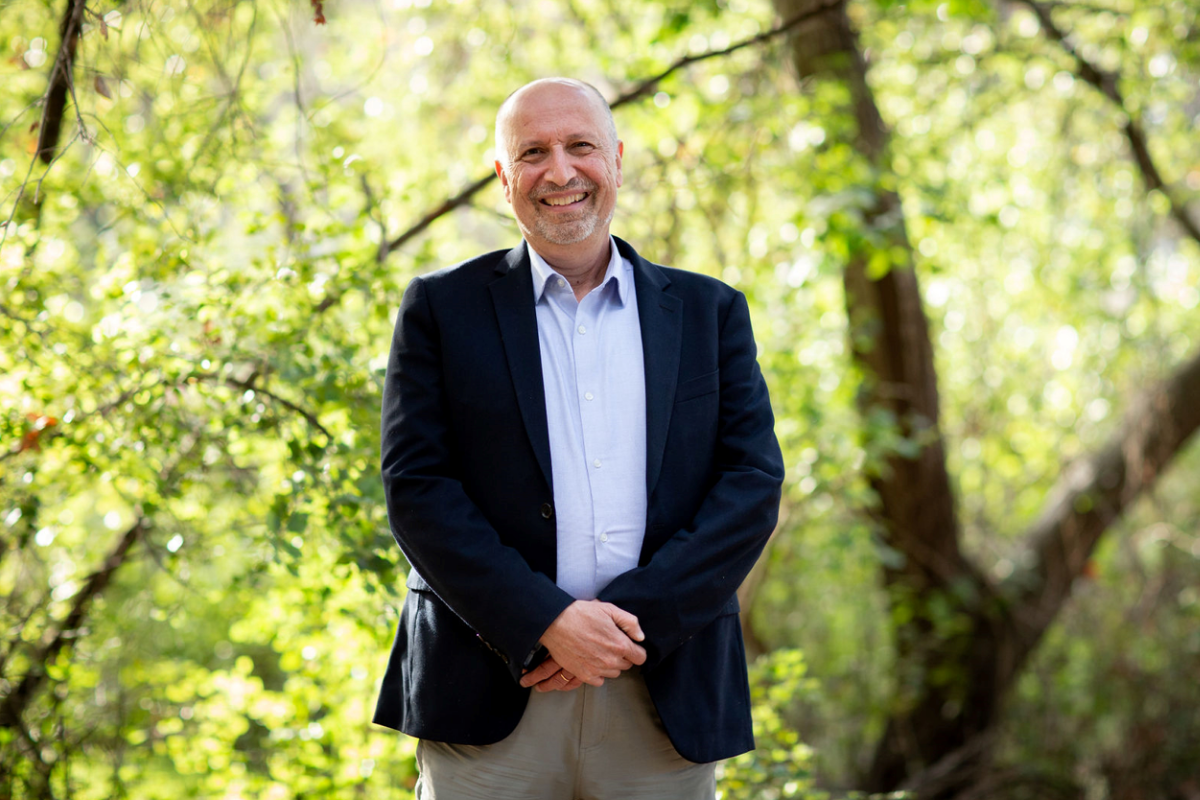 Ara Guzelimian is Artistic and Executive Director of the Ojai Music Festival, beginning in that position in July 2020. The appointment culminates many years of association with the festival, including tenures as director of the Ojai Talks at the Festival and as Artistic Director 1992-97.
Ara Guzelimian is Artistic and Executive Director of the Ojai Music Festival, beginning in that position in July 2020. The appointment culminates many years of association with the festival, including tenures as director of the Ojai Talks at the Festival and as Artistic Director 1992-97.
Ara Guzelimian stepped down as Provost and Dean of the Juilliard School in New York City in June 2020, having served in that position since 2007. At Juilliard, he worked closely with the President in overseeing the faculty, curriculum and artistic planning of the distinguished performing arts conservatory in all three of its divisions – dance, drama and music. He continues at Juilliard in the role of Special Advisor as well as directing the school’s Kovner Fellowship Program.
Prior to the Juilliard appointment, he was Senior Director and Artistic Advisor of Carnegie Hall from 1998 to 2006; in that post, he oversaw the artistic planning and programming for the opening of Zankel Hall in 2003. He was also host and producer of the acclaimed “Making Music” composer series at Carnegie Hall from 1999 to 2008. Mr. Guzelimian currently serves as Artistic Consultant for the Marlboro Music Festival and School in Vermont. He is a member of the Steering Committee of the Aga Khan Music Awards, the Artistic Committee of the Borletti-Buitoni Trust in London, and a Board member of the Amphion and Pacific Harmony Foundations. He is also a member of the Music Visiting Committee of the Morgan Library and Museum in New York City.
He has given lectures and taught at the invitation of the Metropolitan Opera, the Salzburg Easter Festival, Lincoln Center, Carnegie Hall, the Banff Centre for the Arts, the Chicago Symphony, the National Center for the Performing Arts in Taipei and the Jerusalem Music Center. Previously, Ara Guzelimian held the position of Artistic Administrator of the Aspen Music Festival and School in Colorado and he was long associated with the Los Angeles Philharmonic at the beginning of his career, first as producer for the Orchestra’s national radio broadcasts and, subsequently, as Artistic Administrator. As a writer and music critic, he has contributed to such publications as Musical America, Opera Quarterly, Opera News, Symphony magazine, The New York Times, the Record Geijutsu magazine (Tokyo), the program books of the Salzburg and the Helsinki Festivals, and the journal for the IRCAM center in Paris.
Mr. Guzelimian is editor of Parallels and Paradoxes: Explorations in Music and Society (Pantheon Books, 2002), a collection of dialogues between Daniel Barenboim and Edward Said. The Chicago, Boston, and London Symphony orchestras, conducted by Bernard Haitink, have performed Mr. Guzelimian’s performing edition of Mendelssohn’s incidental music to Shakespeare’s A Midsummer Night’s Dream. In September 2003, Mr. Guzelimian was awarded the title Chevalier des Arts et des Lettres by the French government for his contributions to French music and culture.
Views of Ojai
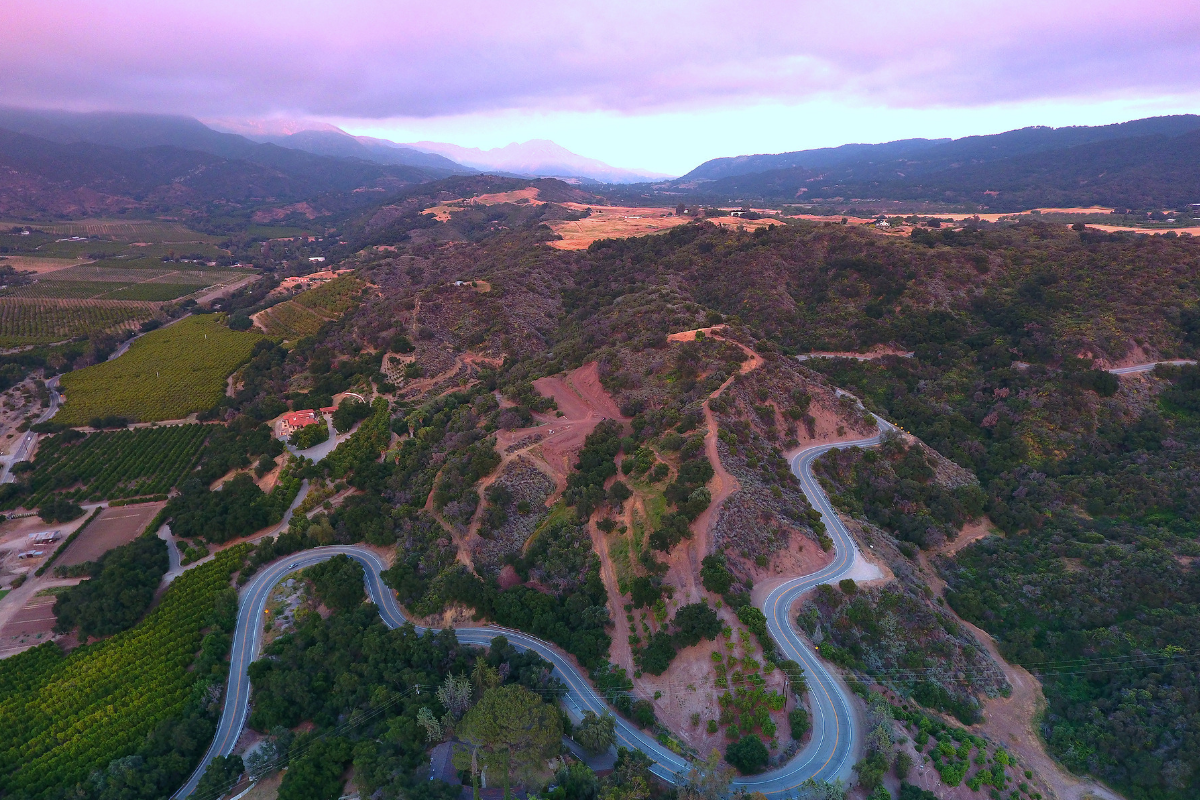
While we can’t be together in Ojai for our traditional four days and four nights of music, discovery and gatherings, we have put together this brief photo gallery from local Ojai friends and photographers. When the time comes to leave our homes and neighborhoods feeling safe and healthy, the picturesque Ojai Valley will be there to enrich our souls.
[ngg src=”galleries” ids=”121″ display=”basic_thumbnail” thumbnail_crop=”0″]Thanks to the Ojai Chamber of Commerce for these local resources.
See local restaurants >
See shops >
See hotels >
Thanks to Cindy Pitou Burton, Cathy Diorio, Gillian McManus, Meditation Mount, Caitlin Praetorius, and Ben Hoffman of Square Productions for photos, Featured image on home page by Ray Powers.
The Art of Transitions
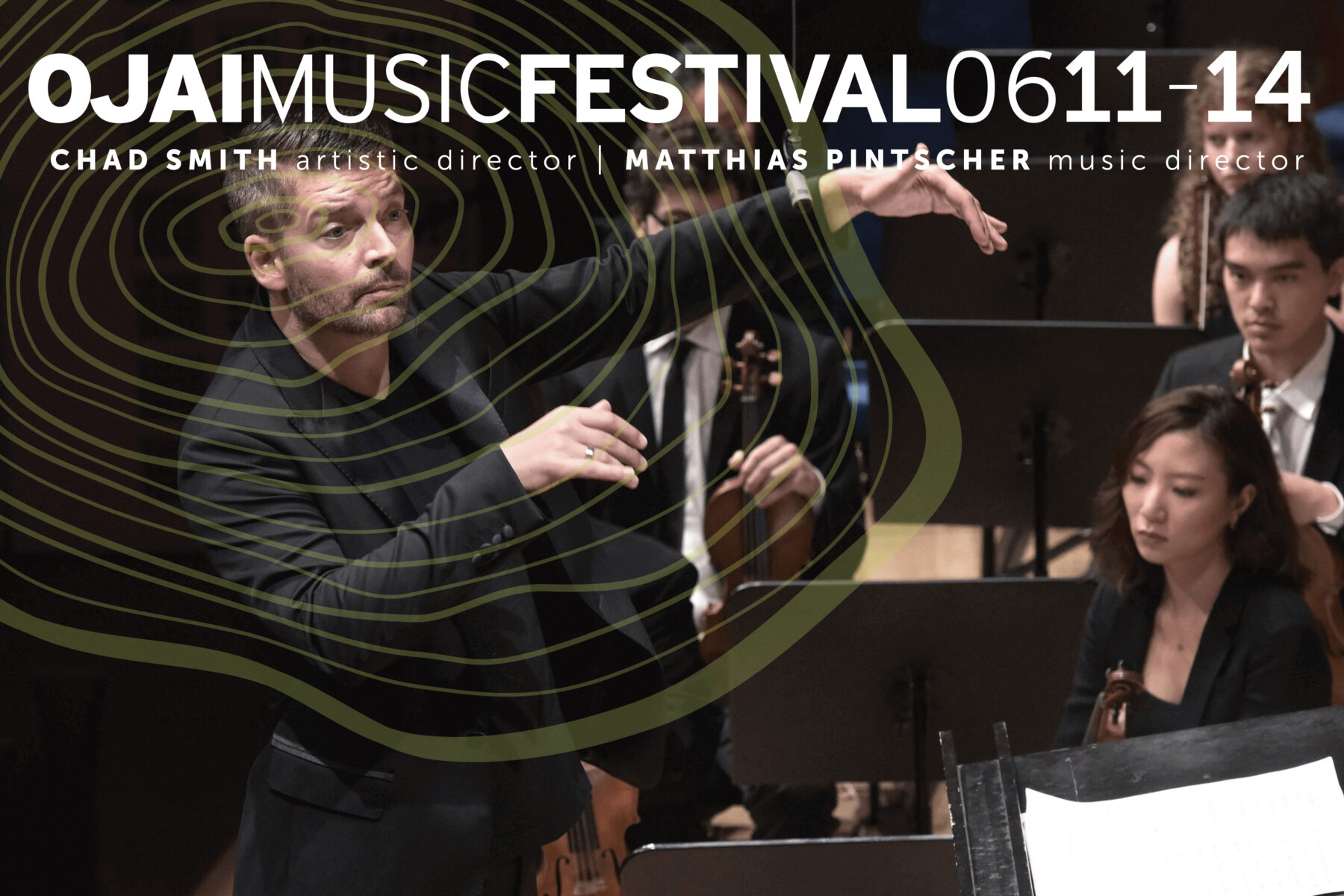
How do we listen to music now? That question might at first prompt a quick checklist of our tech gear — the tools of mechanical reproduction and propagation that have become ever more refined over the 143 years since Thomas Edison first introduced the wax cylinder. But several months into the coronavirus pandemic — with our experience of live performances at best limited to streaming — many of us have been forced to rethink our relationship to music itself.
How we listen now comes with a fresh awareness of the fragility, the vulnerability of this art — the very traits that make it so transformative. For music exists most fully as a live, present-tense exchange among what Benjamin Britten famously termed the “Holy Trinity” of audience, performer, and composer. Music is an art of transitions. It travels between these vertices in unrepeatable ways, tracing interactive pathways that are unique to each performance. And, in the process, music moves from the material to the immaterial. By definition bound to time, it exists through ephemeral sounds that reverberate in a specific space. Yet music simultaneously occupies a realm, inscribed in memory, that defies time and physical distance.
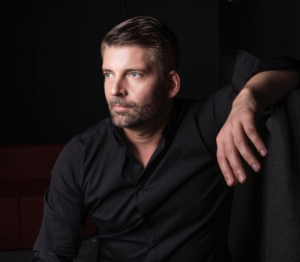 All of these topics come into play in the program that Matthias Pintscher planned for the 2020 Ojai Festival. Against the backdrop of the current crisis, his vision has an added resonance that is uncanny, since Pintscher’s core approach to music is to shake away facile assumptions, inviting the audience to question again the very basis of how they listen, and to listen with heightened awareness — to intriguing discoveries from contemporary composers and familiar repertoire alike. The metaphor of a landscape appears frequently in his discussions of music:
All of these topics come into play in the program that Matthias Pintscher planned for the 2020 Ojai Festival. Against the backdrop of the current crisis, his vision has an added resonance that is uncanny, since Pintscher’s core approach to music is to shake away facile assumptions, inviting the audience to question again the very basis of how they listen, and to listen with heightened awareness — to intriguing discoveries from contemporary composers and familiar repertoire alike. The metaphor of a landscape appears frequently in his discussions of music:
“Landscapes are mostly diverse. Landscapes hold surprises and are deeply human in the end. Music somehow has the same vulnerability and sensitivity as a landscape. You have to care deeply when you put together a program or cultivate a landscape. These are all works that have been part of my life for a long time. As music director, you bring works and flavors and personalities that people have never heard of, and you present pieces they know in a new light.”
Landscapes, like music, are also about transitions. Various kinds of transitions emerge from the underlying threads that link Pintscher’s intricately designed sequence of programs. Take the transition from his own mentor, Pierre Boulez, to himself and other peers who have navigated paths unforeseen by the postwar Modernists. Pintscher stands as a prime exemplar of these, combining formidable gifts as a composer, conductor, curator, and teacher. A self-described wanderer who was led by curiosity to leave his native Germany as a teenager and who lived in England and Israel in his 20s, Pintscher now divides his time, when not on the road, between Paris and Manhattan. His compositions often explore the transition from indistinct noise to the most refined timbral combinations. They draw on his love of visual art, poetry, and theater, transitioning among these different artistic media without betraying music’s inherent self-referentiality. The 2020 program encompasses a de facto retrospective of Pintscher’s instrumental writing, from an early string quartet that responds to Gesualdo’s late-Renaissance spiritual strife to his recent piano concerto Nur (the Hebrew word for fire), in which impulses from today’s young American avant-garde are discernible.
As a conductor educated in the fine details of Boulezian aesthetics, Pintscher fondly recalls the first score he studied with the Frenchman Debussy’s exquisite late ballet Jeux. Boulez’s simultaneous command of surface and structure, detail and design, “informed my insight into sound production, into what it means to tackle a style to conduct an orchestra.” Boulez himself proved to be a master of the “art of transition” in the sense in which Wagner used the phrase: with reference to Tristan und Isolde, where he described his ability to shift gradually from one extreme state to another as perhaps his “finest and deepest art.”
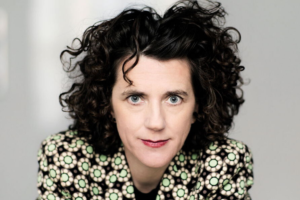 Pintscher ascribes Boulez’s outlook to a “consciousness of detail” that he associates with French culture (and with cooking, another passion). But this also coexists for Pintscher with a love of surprises, with unexpected juxtapositions. Olga Neuwirth’s music could hardly be more different, yet Pintscher, who has long felt a close rapport with his Austrian peer, is one of her most steadfast champions. He recently conducted the world premiere of her Virginia Woolf–inspired opera Orlando — the first opera commissioned from a female composer by the storied Vienna Staatsoper. The moment he began thinking up his ideal programming choices for Ojai, Pintscher says, he knew he wanted to spotlight Neuwirth. Before the pandemic, the plan was for him to conduct the U.S. premiere of Le encantadas, her immersive response to Herman Melville, in Los Angeles — a prelude to set the stage for the Ojai Festival.
Pintscher ascribes Boulez’s outlook to a “consciousness of detail” that he associates with French culture (and with cooking, another passion). But this also coexists for Pintscher with a love of surprises, with unexpected juxtapositions. Olga Neuwirth’s music could hardly be more different, yet Pintscher, who has long felt a close rapport with his Austrian peer, is one of her most steadfast champions. He recently conducted the world premiere of her Virginia Woolf–inspired opera Orlando — the first opera commissioned from a female composer by the storied Vienna Staatsoper. The moment he began thinking up his ideal programming choices for Ojai, Pintscher says, he knew he wanted to spotlight Neuwirth. Before the pandemic, the plan was for him to conduct the U.S. premiere of Le encantadas, her immersive response to Herman Melville, in Los Angeles — a prelude to set the stage for the Ojai Festival.
A fiercely original and independent musical thinker, Neuwirth is well represented here in works that respond, variously, to Billie Holiday, the ascetic outsider artist Henry Darger, and J.S. Bach. She relishes theatrically animated hybrids of style, genre, and mood, always showing an urge to reinvent herself and her inspirations. As a young student, Neuwirth spent formative years in San Francisco and developed an abiding fascination with American culture — especially its subversive trends in film and music. Yet she is also a “deeply Austrian” artist Pintscher notes, sharing the obsessions of Schubert and Alban Berg and rebellious in her critiques of philistine conformity by her fellow Austrians. For this she was often marginalized early in her career, when Boulez became one of the few in power to offer his support.
What was intended as the long-overdue Ojai debut of the Ensemble intercontemporain (EIC) further underscores the complexity of the Boulezian-Pintscher lineage and brings to mind key moments of transition in Ojai’s history as well. As the embodiment of Boulezian values in practice today, EIC would have given the 2020 Festival a striking historical footprint — even though the ensemble had never previously appeared here. Starting in 1967, Boulez served as music director for seven summers at various points in the Festival’s history up to 2003.
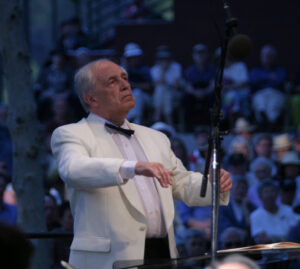
Boulez’s repeated attraction to this special place — over a period spanning some 36 years — is a remarkable phenomenon, according to Chad Smith, artistic director of the 2020 edition. “Southern California might seem an unlikely place for a Parisian intellectual who brought such a sense of rigorousness to music.” Yet Ojai provided a kind of freedom to breathe that the French master lacked elsewhere. Ojai, a place of natural perfection that conjures paradise for so many, beckoned to Boulez with his own concepts of musical perfectibility, as Smith points out. It was here that he could make an attempt at “perfecting paradise.” In this sense, Pintscher’s Ojai programs posit another transition — an invisible bridge — between concepts of new music in Europe and in the US, from the linearity of discarded notions of “progress” to the riotous, chaotic crazy quilt of diverse possibilities that are a young composer’s to choose from today. The chance to encounter sur Incises, arguably the French master’s most satisfying composition, in the beautiful setting of the Bowl promised to spark a very different understanding of this music, its dazzlingly planned intricacies of texture coming closer to the complex freedoms of jazz — or of the skeins of melody Steve Reich liberates from amplified voices and tuned percussion in Tehillim. The presence of Reich and other American composers, incidentally, helps to right a notable shortcoming of Boulez’s Ojai programming, which notoriously skipped over the work being done by Americans in those years, particularly those animated by the energy of Minimalism.
The Reich title is one of several Hebrew words that pop up in Pintscher’s programs, beginning with The Beginning — bereshit, the name of Pintscher’s fascinating meditation inspired by the first word of Genesis — and continuing with an entire program built around the biblical Creation story, including a new Ojai commission from Toshio Hosokawa treating the Flood, which sets the whole process back in motion again. Pintscher’s own catalogue is replete with Hebrew titles. Those chosen for the Festival programs in turn suggest a thread of spirituality — in counterpoint to Boulez’s resolutely materialist secularism — that subtly emerges alongside references to J.S. Bach’s divinely inspired quest for compositional perfection, Martin Luther King Jr.’s Gospel-based calls for justice (Olga Neuwirth), and American Transcendentalism (Charles Ives). Steve Reich’s Tehillim itself implicitly asserts the ancient link between words and music as an organized ritual of praise.
As an art of transitions, music is blessed/condemned to be an art of transience: the notes, colors, combinations which it comprises are destined to fade into nonexistence. Like immortality, music that did not die would rob us of any sense of meaning. This is the paradox Mahler, another traveler between worlds (Old and New, Jewish and Christian, composer and performer) explores so movingly in his late Das Lied von der Erde. The longing for eternity, given voice in the final, longest movement, is at its most acute in a scene of leave-taking.
—THOMAS MAY
Thomas May is a freelance writer, critic, educator, and translator. He has written for The New York Times and regularly contributes to the program books of the Lucerne Festival, Metropolitan Opera, and Juilliard School. His books include Decoding Wagner and The John Adams Reader. Visit Thomas May’s website at https://memeteria.com/
2020 Festival T-Shirts


The Ojai Music Festival is often cited as a creative laboratory for artists and audiences, and our famously engaged and adventurous patrons are key to each Festival experience. After the cancellation of the 74th Festival, we appreciated the wonderful messages of support from our patrons. Now, we will honor the unrealized Festival, June 11 to 14, 2020, with virtual offerings on our website, OjaiFestival.org. In addition to joining us online for these events, purchase a commemorative shirt to add to your collection! We are beyond grateful to each and every person who comprises our Festival family. Thank you for your support! (Deadline to order is June 15, 2020.)

